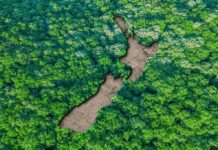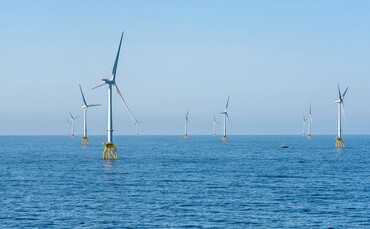The 1.1GW Seagreen Offshore Wind Farm has begun exporting power at full capacity, putting it on track to deliver clean power to almost 1.6 million homes a year.
Both Scotland’s largest and the world’s deepest fixed-bottom offshore wind farm, Seagreen is a joint venture between TotalEnergies and SSE Renewables comprising 114 turbines situated 27 kilometre off the Angus coast in the North Sea’s Firth of Forth.
Operated from a dedicated onshore operations and maintenance base at Montrose Port, the 1,075MW project has the potential to displace more than two million tonnes of CO2 a year from electricity generated by fossil fuels.
Costing in the region of £3bn, Seagreen was first awarded exclusive development rights for the Firth of Forth Zone site by Crown Estate Scotland in 2010. The project was consented by Scottish Government Ministers in 2014 before construction began in June 2020.
The first Vestas 10 MW turbine was installed in December 2021, with first power achieved in August 2022 ahead of the installation of the final turbine at the site earlier this summer.
Now fully complete, power from Seagreen is being exported from the North Sea via three subsea cables to landfall at Carnoustie, through 19 kilometres of underground cable to a new onshore substation at Tealing near Dundee, before being distributed to homes and businesses via Britain’s power grid.
Delivery of the project provide a £1bn boost to the Scottish economy during construction as well as around 4,000 jobs, according to independent analysis by consultancy PwC.
Scotland’s First Minster Humza Yousaf welcomed Seagreen coming on stream, describing it as a fantastic example of the work being done to unleash Scotland’s renewable energy potential.
“This significant milestone for Seagreen is also significant for Scotland, taking us a step closer to creating a net zero energy system that delivers affordable, secure and clean energy,” he said. “Delivering on our climate obligations is an absolute priority for the Scottish Government – so too is our unwavering commitment to a just transition for workers.
“We are determined to maximise the economic opportunity Scotland’s offshore wind potential presents, by developing local supply chains, embedding innovation, boosting skills, creating jobs, and benefitting people and communities.”
UK Energy Security and Net Zero Secretary Claire Coutinho added that Seagreen becoming fully operational provided further proof of how offshore wind was a “resounding British success story”.
“Not only has it become Scotland’s largest offshore wind farm, but it also results in the UK having the world’s five largest operational windfarms off its shores,” she said.
“Producing enough electricity to power the equivalent of 1.6m British homes, Seagreen will help deliver on our net zero ambitions and provide cheaper, cleaner, and more secure energy around the country.”

SSE Renewables, which led the development and construction of Seagreen with the support of TotalEnergies, will take the lead in operating the offshore wind farm moving forwards.
According to the project’s managing director, SSE Renewables’ Stephen Wheeler, the project pushed new boundaries with the first ever gigawatt-scale deployment of suction caisson technology to fix offshore wind turbine foundations to the seabed at record depths. “This makes Seagreen a pioneer for future developments in deeper waters so they can be built faster and more efficiently, accelerating the clean energy transition,” Wheeler said.
Alistair Phillips-Davies, chief executive at the company, said the project would make a “significant contribution” to UK energy security and extend Scotland’s leadership in clean energy generation, but he added that the UK needs “many more Seagreens” to deliver on its climate goals.
“We look forward to working with governments, partners, investors and local communities to bring more landmark projects like this forward in the future,” he said.
Patrick Pouyanné, chairman and CEO of TotalEnergies, described the project as a “new step” towards the firm’s target of reaching more than 100TWh of power generation by 2030.
“Our participation in the project alongside SSE has enabled us to strengthen our offshore wind expertise which will be extremely useful for our future projects in the UK, US and Germany,” he added.
“It’s also very good news for Scotland, as Seagreen makes a significant contribution to the country’s net zero ambition for 2045.”
The news comes barely a week after developers SSE, Equinor, and Vårgrønn announced that the first turbine as part of the first phase of the world’s largest offshore wind farm at Dogger Bank had begun exporting to the UK power grid.
The first power from the 1.2GW Dogger Bank A wind farm is set to be followed by the development of two further wind farms in the Dogger Bank zone, which should ultimately deliver 3.6GW of clean power capacity in the coming years.
Want to understand what is going on at the cutting edge of sustainability? Check out BusinessGreen Intelligence – the premier information for professionals focused on the UK’s green economy.










